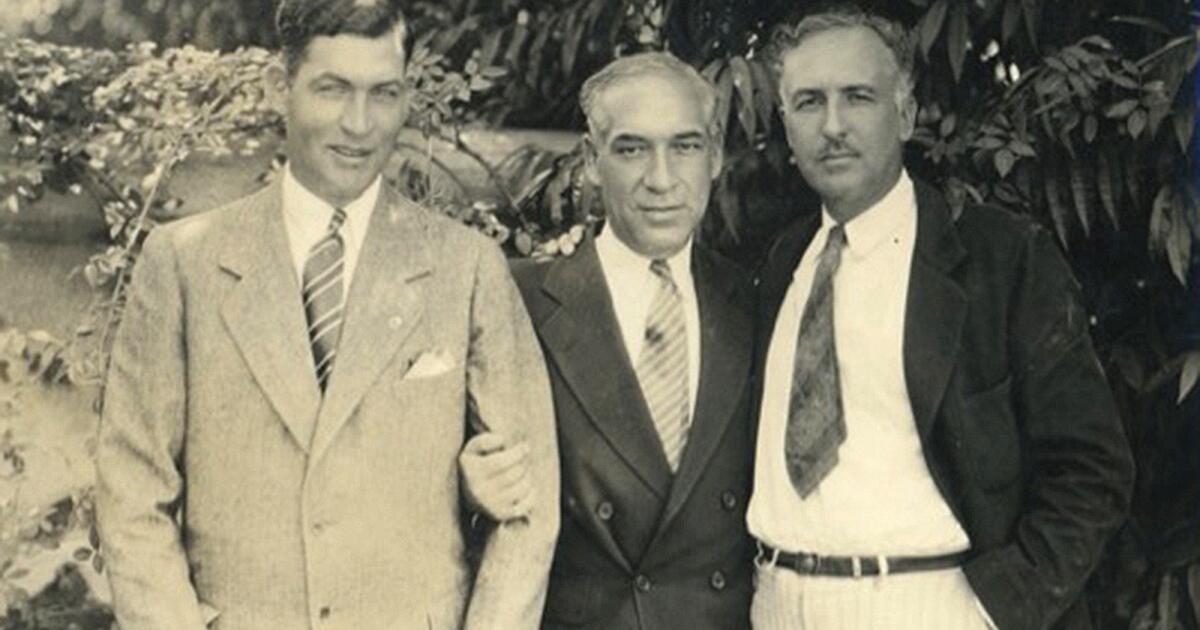The crucial success of the FX sequence “Reservation Canine” and the highlight on performers like Lily Gladstone, an Academy Award nominee for “Killers of the Flower Moon,” has heightened consciousness of Indigenous cultures and tales, significantly in Hollywood, the place till not too long ago they’ve been largely caricatured — or absent — in the course of the century-plus historical past of the leisure trade.
However Indigenous folks weren’t fully invisible in present enterprise, as I realized throughout a decade of weekly conversations — household historical past classes — with my great-uncle Wally Fox earlier than his demise on the age of 96 in 2022. Inside his ramshackle Westside dwelling, Wally gingerly positioned his bony body sideways on an armrest of his recliner and performed the function of raconteur, narrating exceptional tales about our lineage. Essentially the most notable had been a sequence of classic Hollywood tales — about his father, Wallace Fox Sr., and his father’s brothers — that had been forgotten like a stack of dusty unsold scripts.
The plot traces had been compelling, incorporating the invention of Mexican actress Delores del Rio, the B-movie meeting line of the Nineteen Twenties, ’30s and ’40s, and three siblings from the Chickasaw Nation who one way or the other thrived within the early years of the movement image enterprise. Typically they used their Indigenous heritage to their benefit. Collectively, the Fox brothers — my father’s kinfolk — wrote 50 movies, directed 153, produced 33, acted in 37 and assisted in directing 14. They even directed westerns at a time when Indians had been all the time the unhealthy guys.
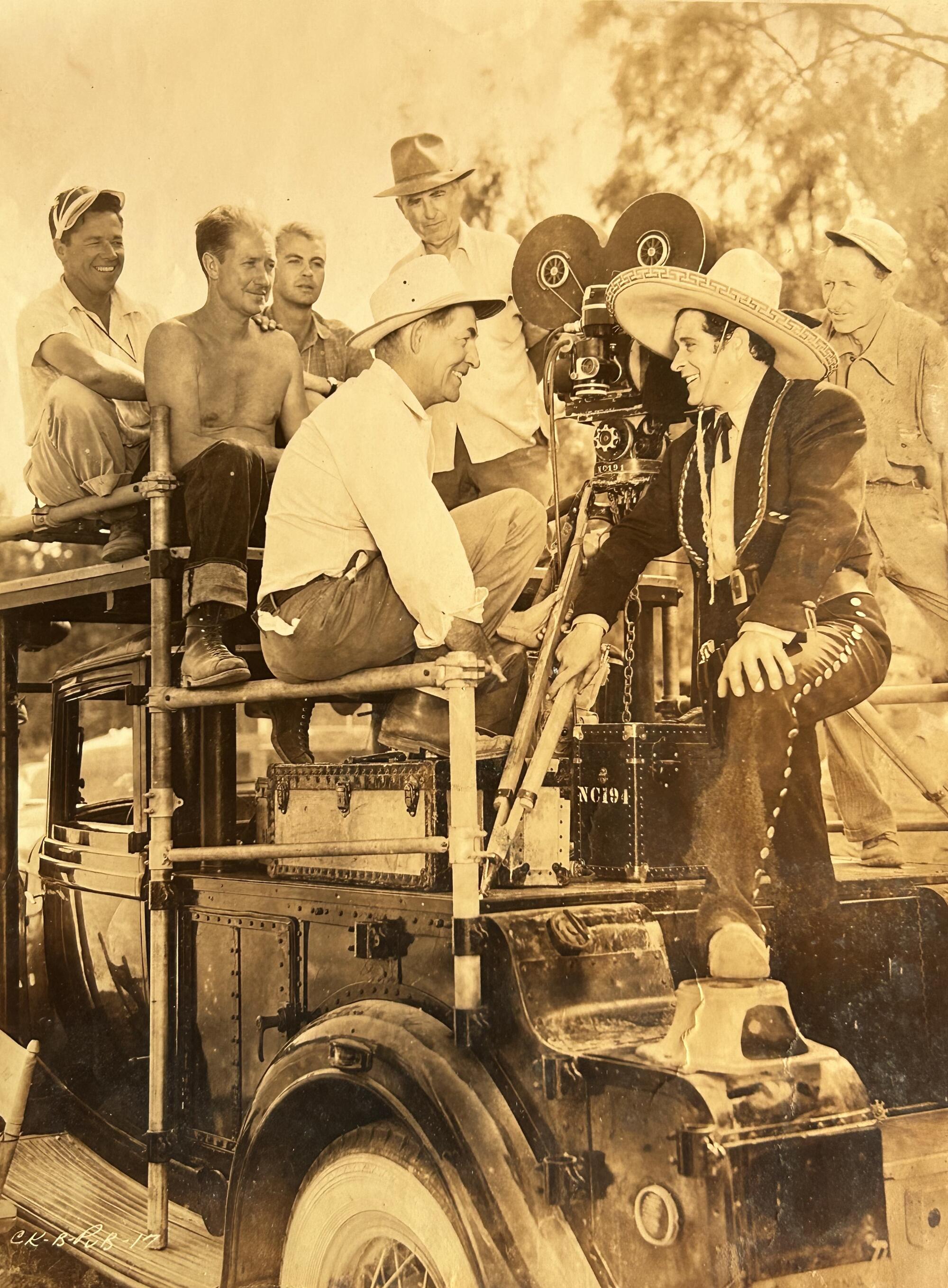
Wallace Fox Sr., middle left, was a moviemaker within the early days of Hollywood. His son, the writer’s great-uncle Wally, had many years of present enterprise memorabilia in his Westside dwelling.
(Courtesy of the Fox household)
Wally’s tales about his father and uncles had been a revelation for somebody whose childhood was a primer of Nineteen Seventies parental dysfunction and instability. My very own father was not a lot of a presence, so I naturally leaned on my mom’s aspect for id. But whilst I linked along with her household, I usually questioned why there was nobody else like me, nobody who remotely shared my pursuits, expertise or path.
I used to be a reasonably inventive child, even making an attempt to write down a soundtrack to a college play about Cortés and Montezuma within the second grade. Finally, I turned a storyteller — a author, journalist and producer. It was a pure development: With a dad who had little curiosity in parenting, and a mother and stepdad who had been roughly standard, my creativeness turned my greatest good friend, and in some methods, it nonetheless is.
After years of listening to Wally, and a whole lot of subsequent analysis to be taught extra about my father’s household, I’ve a a lot better understanding of who I’m — that I’m part of a inventive lineage, that maybe I inherited one thing.
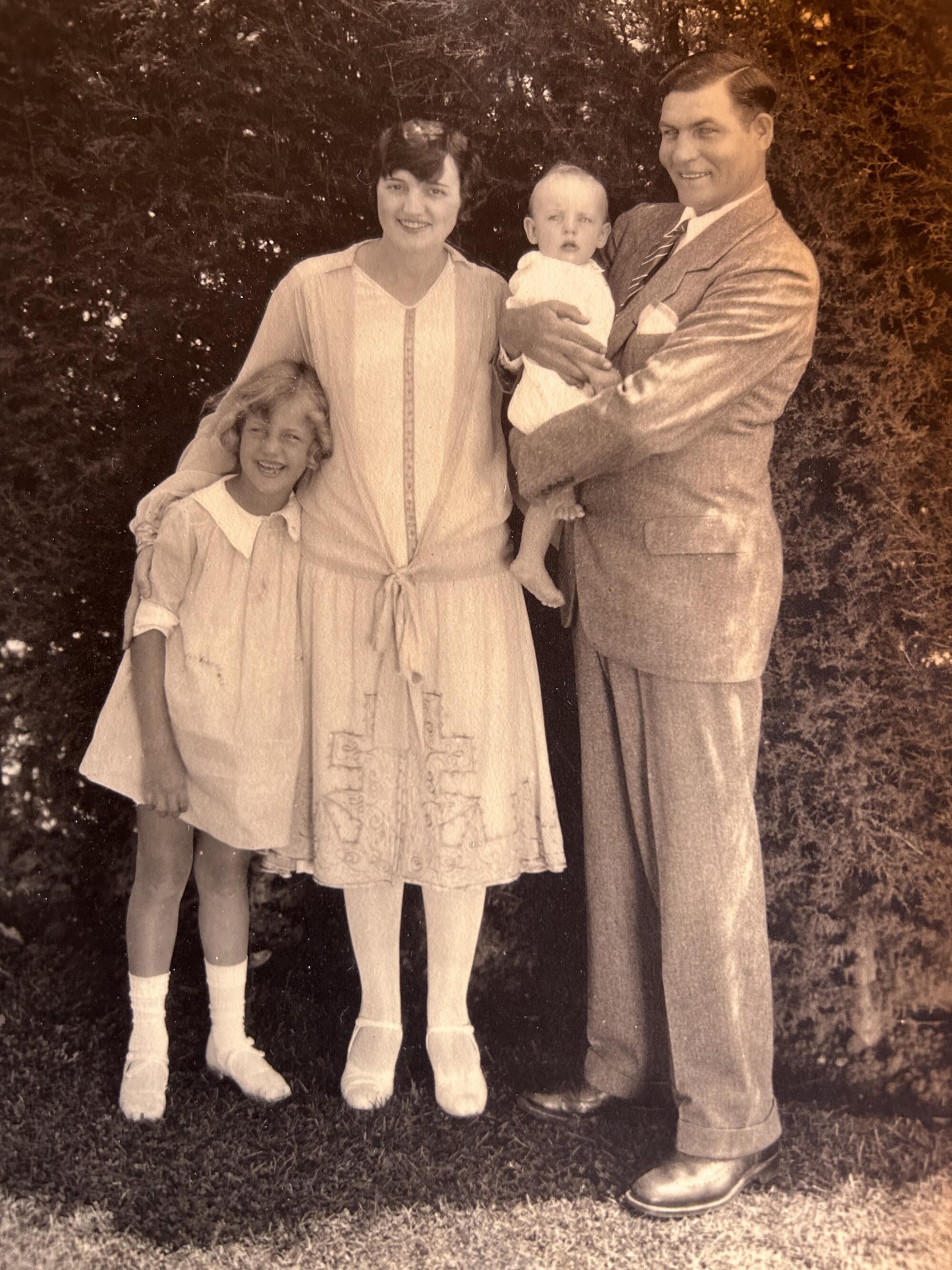
Wallace Fox Sr., proper, along with his spouse, Cleo, and their youngsters: Frances, the writer’s grandmother, and Wally.
(Courtesy of the Fox household)
:::
My mom and father divorced earlier than I turned 2, so I’ve no idea of them as a pair. Early reminiscences of my dad — whose mom, Frances, was Wally’s older sister and my grandmother — are few: random postcards from Oak Creek, Colo., the place he lived for a number of years, and sporadic visits after he returned to Los Angeles after I was 4 or 5.
Wally was the one relative on my father’s aspect who acted like “household” within the conventional sense. Plus, he was my solely relative with any disposable revenue. He helped me purchase my first automotive, wired me money after I was caught in Europe and attended my faculty commencement.
He was genteel, providing handshakes relatively than hugs. But he was a thriller, a lifelong single man and self-proclaimed ethical compass: He took immense pleasure in having his life collectively, in being the one who cleaned up the household’s messes after which by no means letting them overlook it.
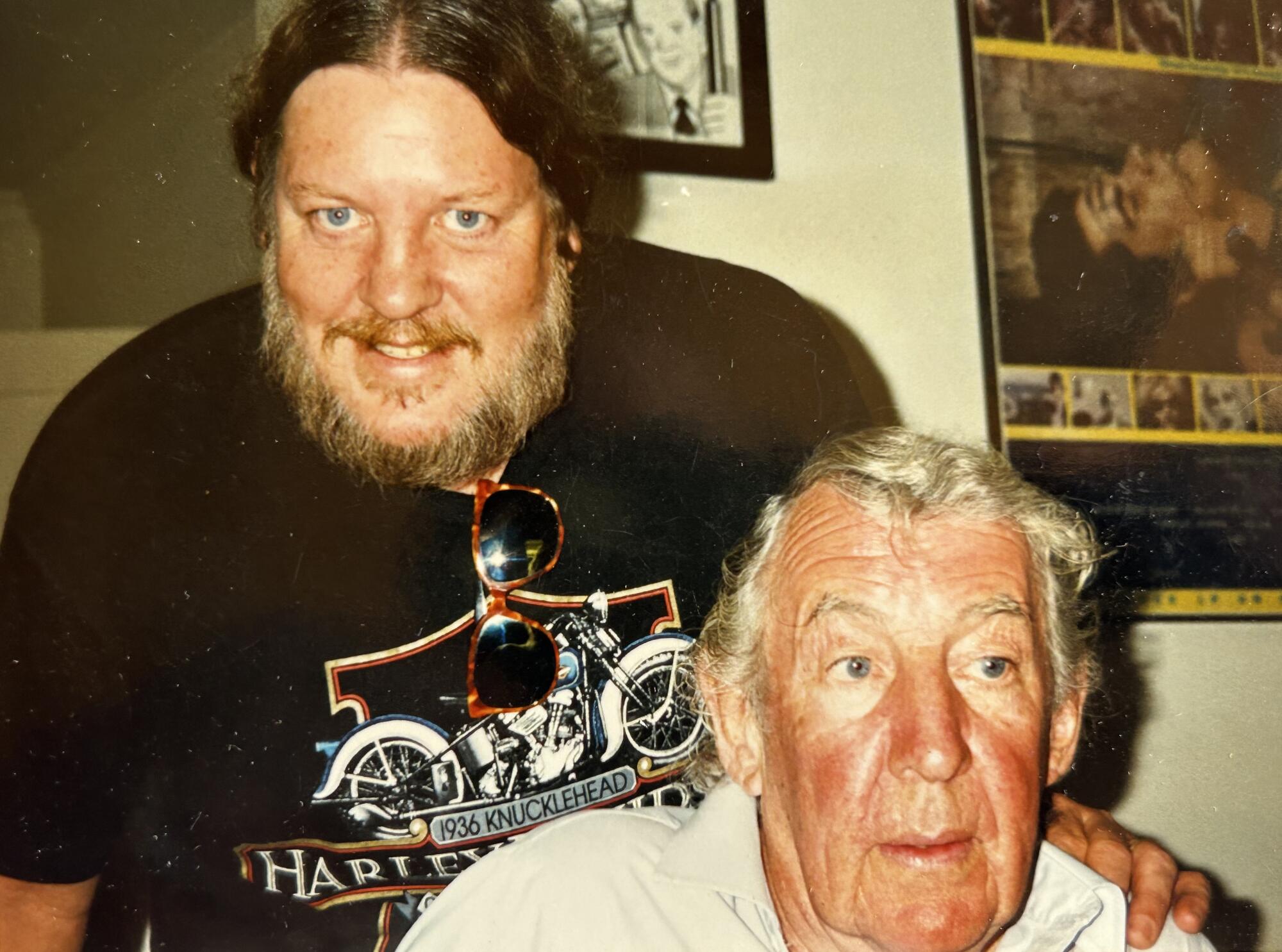
Richard Clay, left, the writer’s father, and Wally Fox Jr. in 1995.
(Courtesy of the Fox household)
However that began to vary after I turned Wally’s caregiver a decade in the past. My common visits started quickly after my father’s demise within the fall of 2013. He’d been identified with aggressive mind most cancers and refused therapy, preferring to play out his string sitting on a trashed recliner in the lounge of the dusty outdated Spanish dwelling he shared with Wally as he waited to die.
I chauffeured Wally to the grocery retailer or to the podiatrist for his favourite indulgence: month-to-month pedicures. (On the finish of his life, he lacked the dexterity to bend his tall and more and more frail physique, already curved like a droopy flower, to achieve his ft with any diploma of precision.) I opened and browse his mail and paid his payments.
And we did a whole lot of speaking.
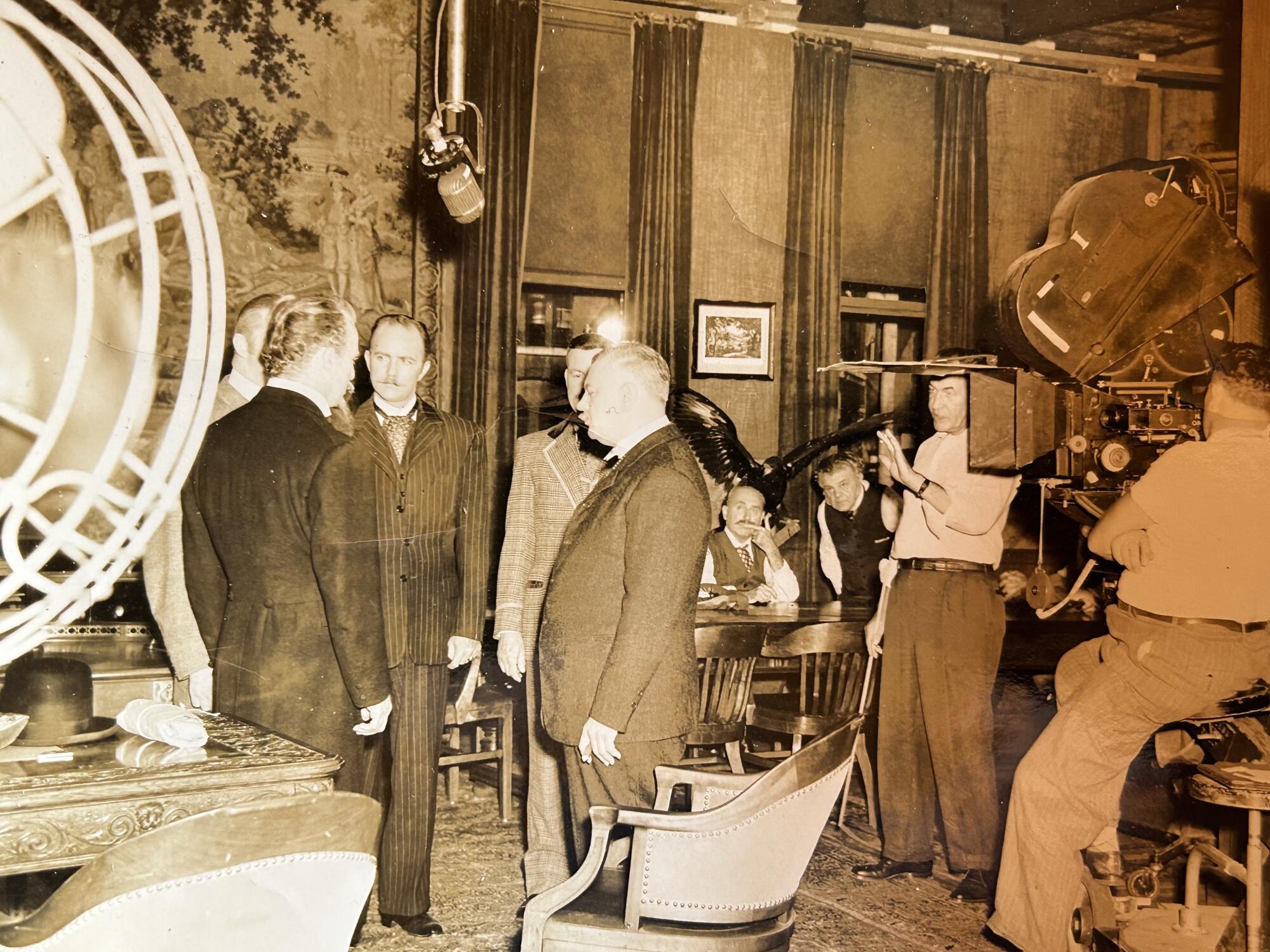
Wallace Fox Sr., instantly to the left of the massive movie digital camera, units up a shot.
(Courtesy of the Fox household)
At first, our deepest conversations revolved round groceries. Each Thursday I learn him the grocery store adverts, as a result of his deteriorating eyesight disadvantaged him of the enjoyment of doing so himself.
Ultimately, he acquired snug and began reminiscing concerning the previous and about our connection to Hollywood. With every go to, his phrases chipped away at my emotional disassociation.
Raised on Crescent Drive in Beverly Hills in the course of the Despair, Wally walked Olympic Boulevard when it was a dust street; later, he bailed my dad out of jail. He had his personal tough relationship along with his father, who was born into the Chickasaw Nation in 1894 within the city of Purcell in what’s now Oklahoma. “He didn’t have a clue as to what being a dad or mum was,” Wally instructed me. That sounded acquainted.
My Web search of his father — my great-grandfather — revealed little or no. I discovered only one picture. However he did have a prolonged IMDb web page with credit that stretched from 1921 to the early days of tv within the Fifties. He was a go-to on the B-movie circuit, directing almost 100 movies and tv episodes. But the IMDb bio was perfunctory: “There isn’t quite a bit identified about Fox” and he’s “been type of forgotten by time.”
By way of my analysis, I additionally realized about Joanna Hearne, an affiliate professor of movie and media research on the College of Oklahoma with a concentrate on Indigenous movie historical past. Hearne, it turned out, was one thing of a Fox household skilled.
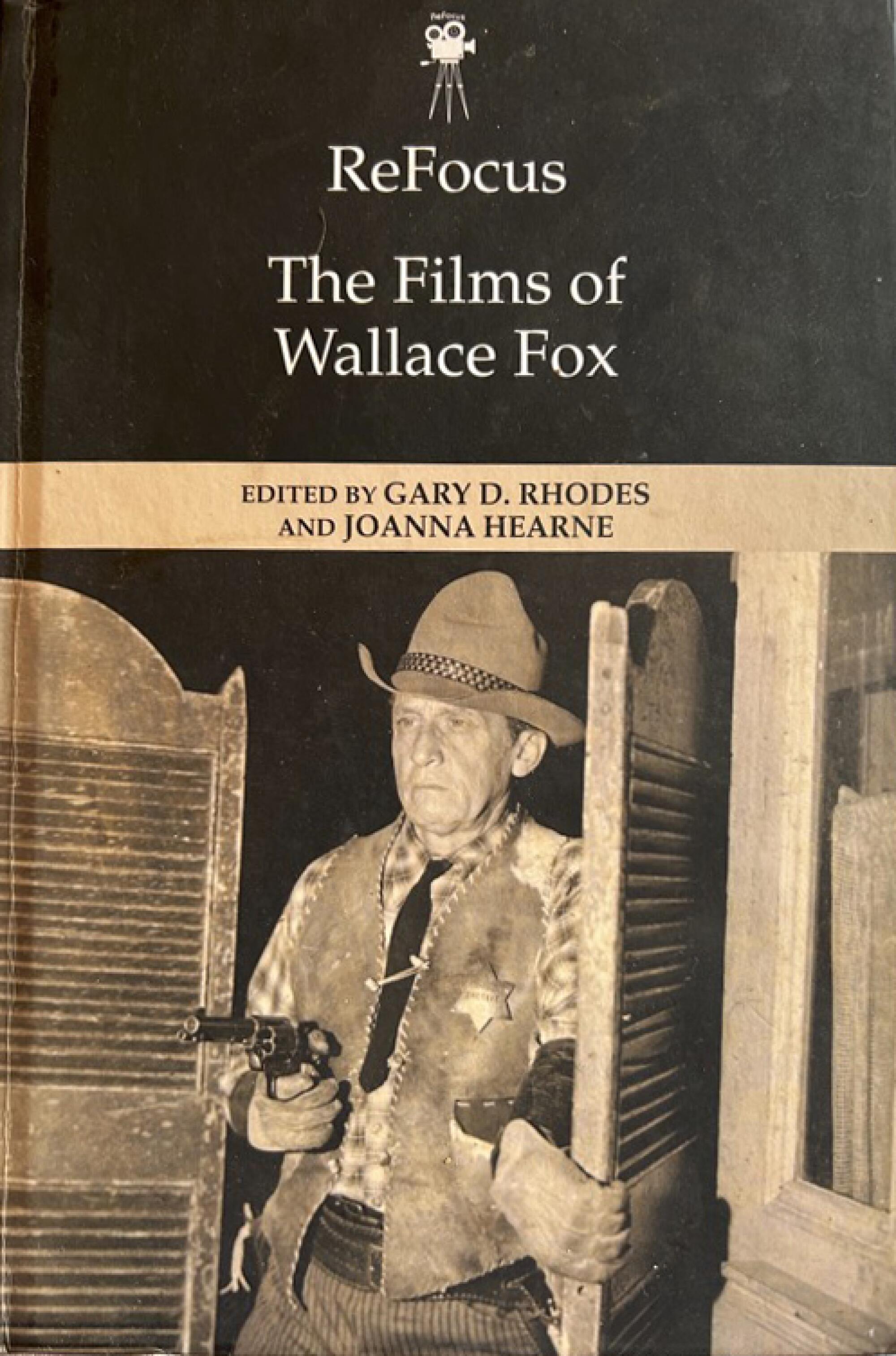
“The Movies of Wallace Fox,” a set of educational essays deconstructing Fox’s function as a malleable cog within the B-movie manufacturing unit, was edited by Joanna Hearne and Gary D. Rhodes.
(Edinburgh College Press)
She and her colleague, Gary D. Rhodes, edited the 2022 guide “The Movies of Wallace Fox” (Edinburgh College Press), a set of educational essays deconstructing Fox’s function as a malleable cog within the B-movie manufacturing unit, additionally nicknamed “Poverty Row.” In 1944 alone, he directed eight movies.
“It wasn’t nicely compensated, however the entire level was you had been producing issues on an extremely tight timeline and funds,” Hearne stated. “There was a circuit of individuals and Wallace Fox was identified for being in that circuit.” The professor was completely satisfied to listen to from me, as she confirmed what the IMDb bio revealed: Little was identified about Fox apart from what might be gleaned from his movies. She was the skilled on his skilled life, and I had Uncle Wally’s tales concerning the private lives of Fox and his brothers. We realized we had data to commerce.
:::
Wallace Fox’s low profile and lengthy profession starkly contrasted with that of his older brother, Edwin Carewe (born Jay Fox in Gainesville, Texas, in 1883), who left an extended path of biographical breadcrumbs.
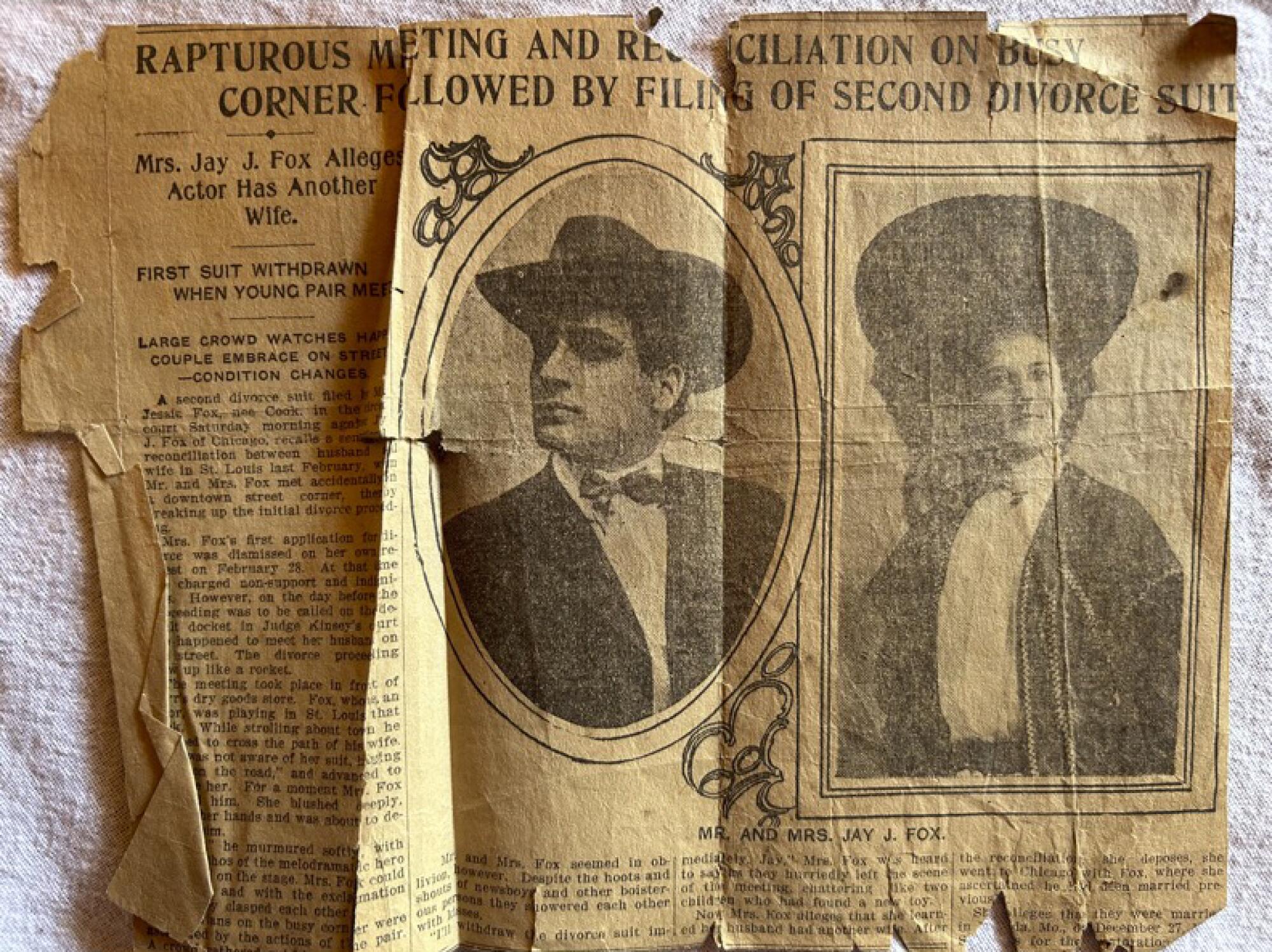
The St. Louis Star-Chronicle printed a narrative about Edwin Carewe (born Jay Fox) in 1906.
(Courtesy of the Fox household)
Carewe was a larger-than-life character; as early as 1906, earlier than he’d modified his identify, the St. Louis Star-Chronicle reported that, as a younger actor performing on the town, he was allegedly married to 2 ladies directly. He additionally directed bold, silent-era movies, together with 1924’s “A Son of the Sahara,” 1927’s “Resurrection” and 1928’s “Ramona” (that includes his discovery, Dolores del Rio, whom he hoped to show right into a feminine Rudolph Valentino). “Ramona” is usually referenced as one of many nice movies of the silent period, however, as with many different early Hollywood gamers, the talkies took Carewe out of the sport.
Carewe’s situations usually had been written by older brother Finis Fox, who was born in 1881 in Caddo, one other small city within the territory that might develop into Oklahoma. Although Finis was much less prolific, his life was equally colourful: He directed a number of movies but additionally fought within the Spanish-American Conflict, labored as a journalist for the Every day Oklahoman and served within the Chickasaw legislature early within the twentieth century. Throughout the household, he was often called one thing of a free-spirited rake.
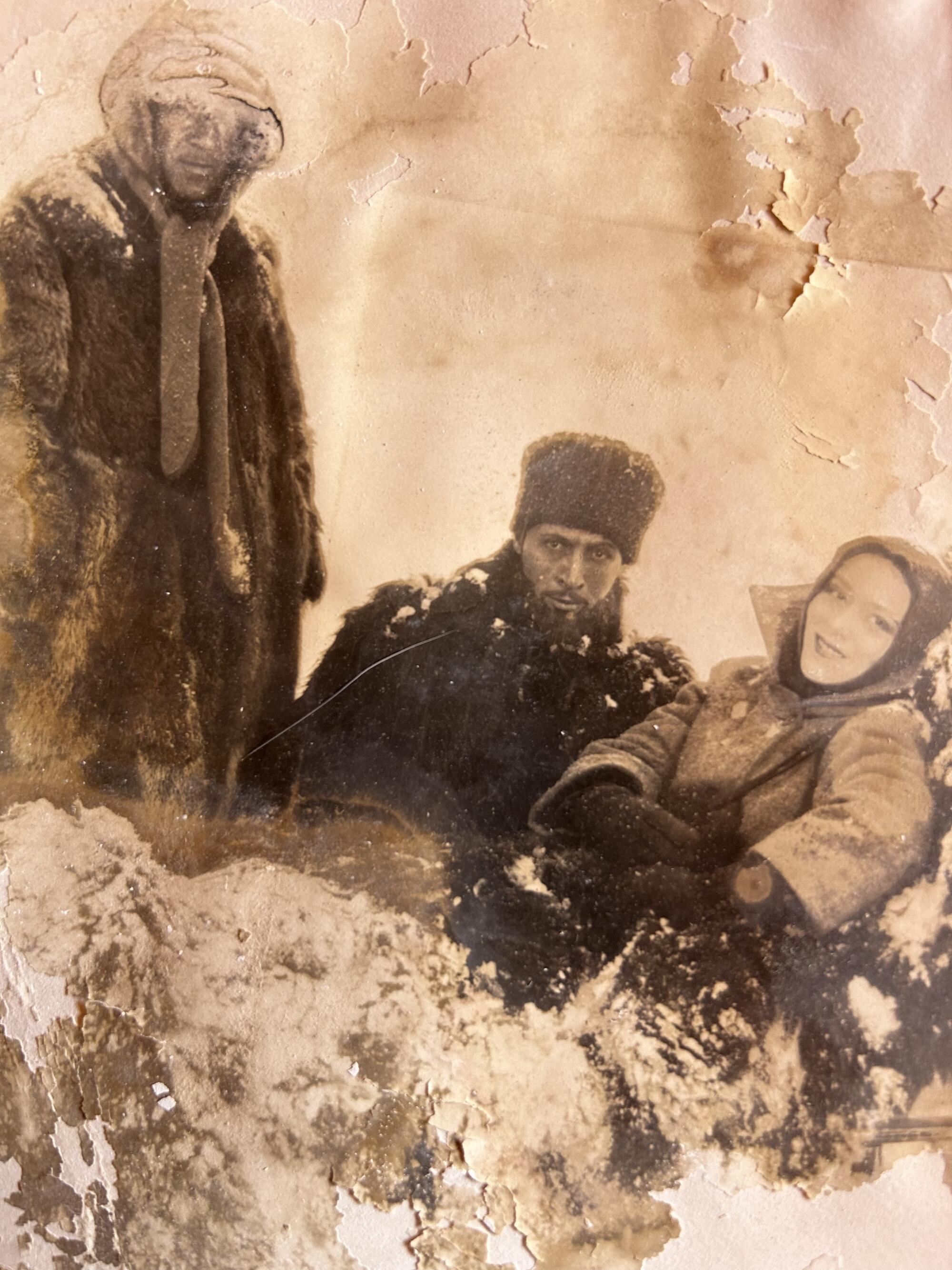
Edwin Carewe on a film set with actress Delores del Rio.
(Courtesy of the Fox household)
Finis was the naughty brother, in accordance with Wally. “The ’20s had been his time to reside it up,” he stated, recalling his uncle residing at Hollywood’s Backyard of Allah Lodge, proudly owning a City Automotive — however not driving it — and parading an 18-year-old on his arm nicely into his 40s. “Finis, he was fairly a personality,” Wally instructed me, sighing with hints of each admonition and admiration. Later in life, it was rumored that Finis Fox disappeared to Mexico. He died in San Antonio, Texas, in 1949.
Carewe, although, was the golden little one, at the least at first. He was an artist and a showman, as expert at advertising and marketing himself as he was at directing silent movies. Carewe projected a public picture that drove enterprise, in accordance with Hearne, and he usually enlisted brief story author and pal Jim Tully to function a press agent, biographer and official yarn spinner for his directorial tasks. One such story, she stated, “revealed” that quickly after leaving his Oklahoma dwelling to affix a touring appearing troupe, Carewe was ready to hop a freight practice the place he encountered Jack London, with whom he allegedly struck up a dialog.
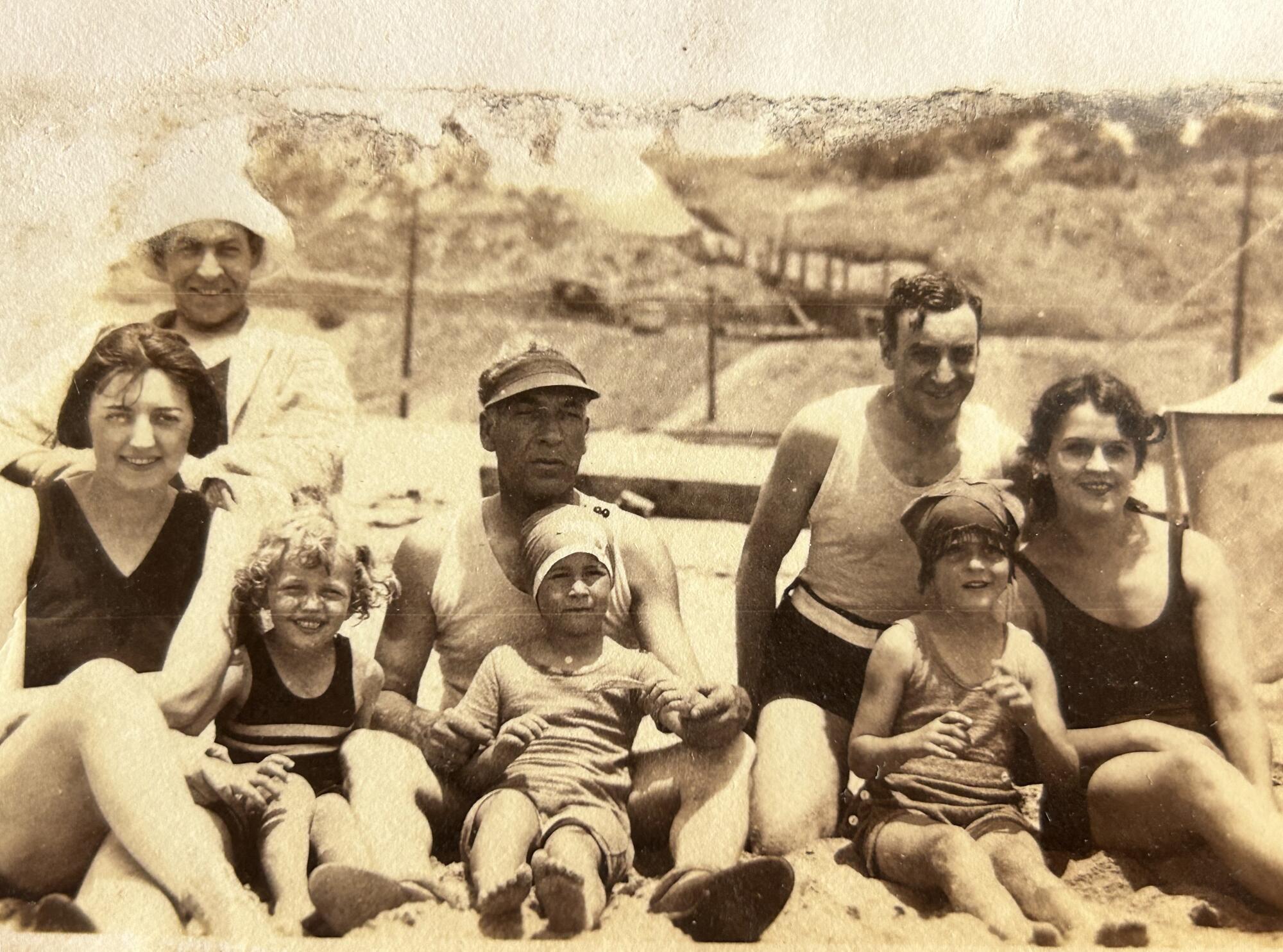
Wallace Fox Sr., left within the again row, and Edwin Carewe, middle within the again row, on the seaside with household.
(Courtesy of the Fox household)
“It’s a must to take the tales with an enormous grain of salt,” stated Hearne. “We don’t have any corroboration of it.”
The Foxes had little bother gaining traction in Hollywood. In keeping with Hearne, it helped that the brothers had been white passing. “The type of skin-color-based discrimination that somebody may need had — they wouldn’t have skilled as a result of they weren’t identifiable as folks of shade in any means. So until somebody knew they’d Chickasaw heritage it wasn’t obvious. And so they managed that narrative; they marketed it.”
Carewe was particularly expert at leveraging his Chickasaw heritage to advertise his tasks. “[He] recognized and marketed an Indigenous id for the general public,” Hearne stated. “And he talked about it in the true cringe-worthy language of the day.”
Utilizing terminology that might provoke twenty first century cultural cancellation, Carewe highlighted tropes that white audiences might perceive as a strategy to model “Ramona” — the story of a girl who was half Native American however raised by a Mexican household — as an genuine telling. “[He] simply splashed it throughout in all places about how acceptable he was to direct this story,” stated Hearne. “He was not hiding his heritage in any means.”
That hyperbole, nevertheless, has restricted any type of correct educational pursuit of the Fox brothers’ story. “Plenty of the scholarship on Indigenous administrators and Indigenous actors within the studio system has been from … the advertising and marketing,” Hearne stated. “As a result of the advertising and marketing supplies are all that now we have.”
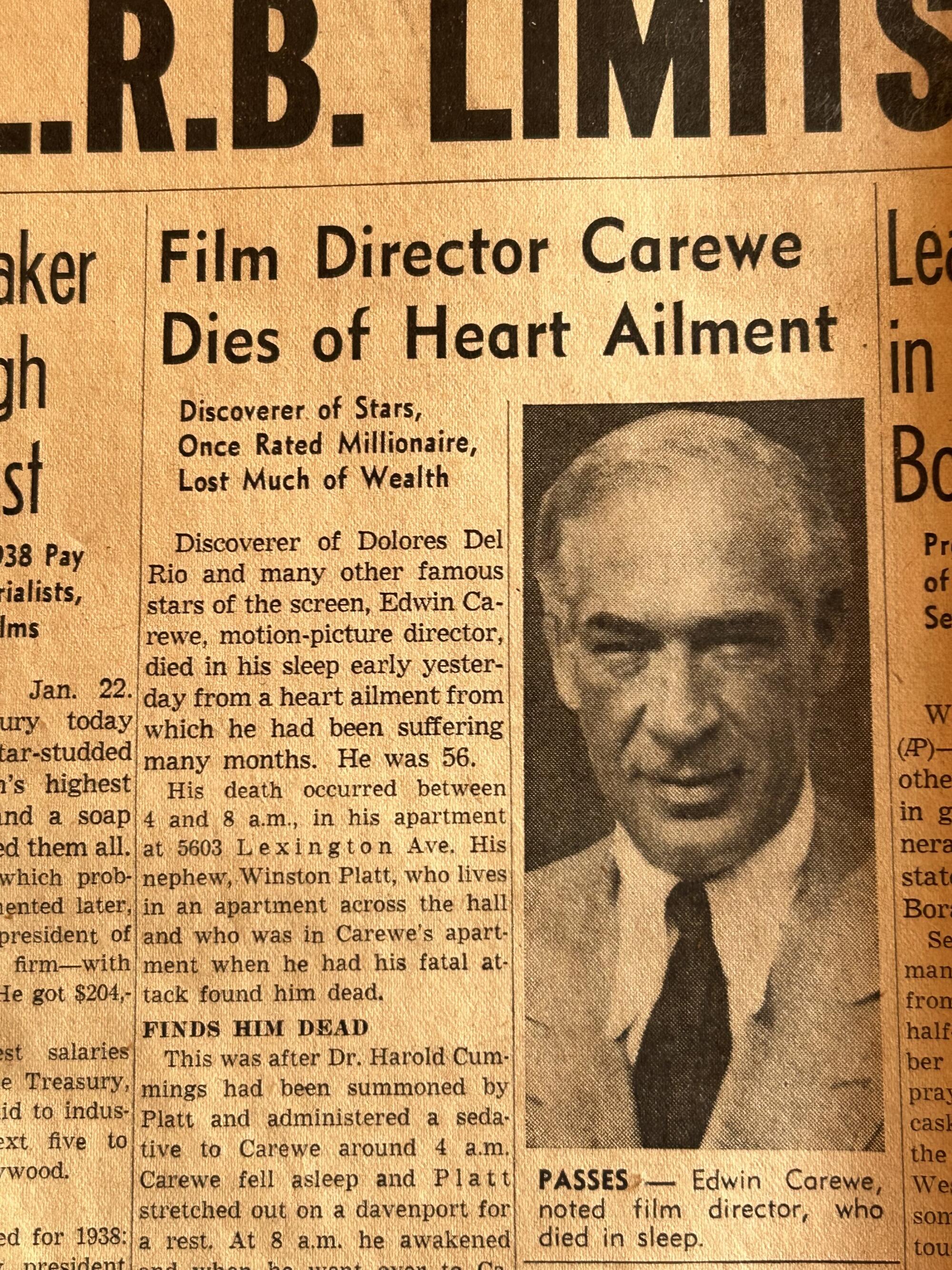
Edwin Carewe’s obituary appeared within the Los Angeles Occasions in 1940.
(Courtesy of the Fox household)
Carewe’s 1940 demise was front-page information in Los Angeles, and he was buried at Hollywood Without end Cemetery. By this time, the director had cycled via a number of post-Hollywood careers, together with creating rental properties within the Coachella Valley and dabbling within the rubbish enterprise in Texas.
Whereas Carewe’s renown prolonged nicely previous his precise profession, his child brother Wallace was stealthy as a tortoise. Whereas serving within the Navy in 1919, Wallace acquired a telegram from Carewe to return to Hollywood, the place he started work as a second-unit director on his brother’s movies. The youngest Fox brother labored at a gradual tempo with nobody actually paying consideration. Nor did he search it — in contrast to his brother Carewe, Wallace didn’t commerce on his Chickasaw heritage to advertise his work.
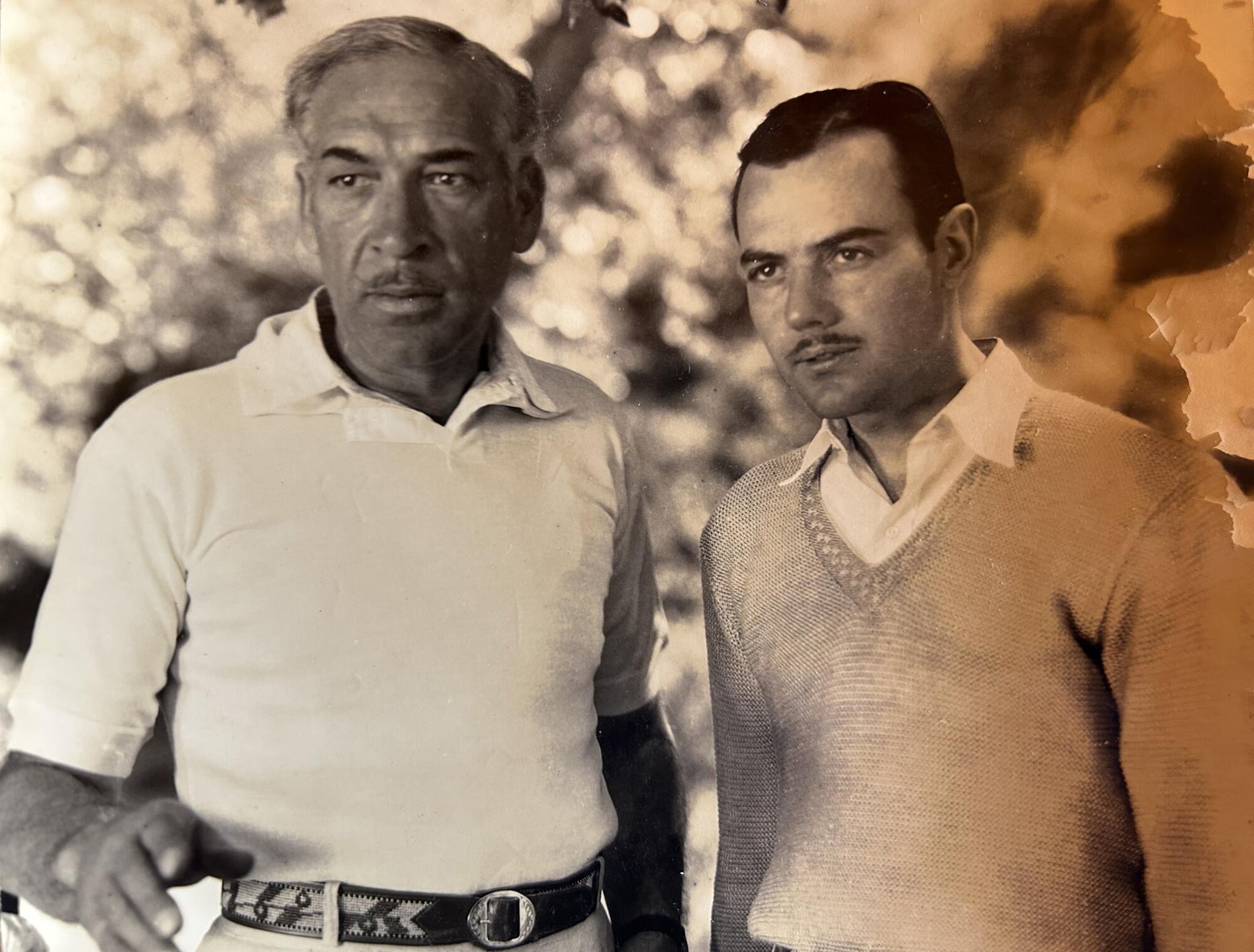
Edwin Carewe, left, on a film set.
(Courtesy of the Fox household)
His motion pictures had been created frugally, to perform because the second half of a double function. Movies like “Pillow of Demise’’ and “The Girl Vanishes’’ have remained in circulation, initially as low cost content material to fill the airtime on native TV’s Saturday afternoon “million-dollar film” codecs and because the type of film you can buy for lower than two bucks on a DVD at random American truck stops. Now, a number of of his movies might be streamed on Amazon.
Wallace Fox was a clock puncher, a work-for-hire worker who adopted directions — which could clarify his restricted Web footprint. He had little management over scripts and even the tasks he selected. However, as “The Movies of Wallace Fox” factors out, there was an artwork to churning out low cost leisure in a wide range of genres. And, in accordance with Hearne, he made probably the most of what he needed to work with.
Fox directed a number of titles within the “working woman” style (together with 1944’s “Profession Lady” and 1945s “Brenda Starr, Reporter”). “He made fairly a number of movies with actually robust feminine protagonists,” Hearne stated. “They rise up and go, they will shoot, they will lasso, they will experience over the horizon and communicate up about what they see and they’re very robust, outspoken characters.”
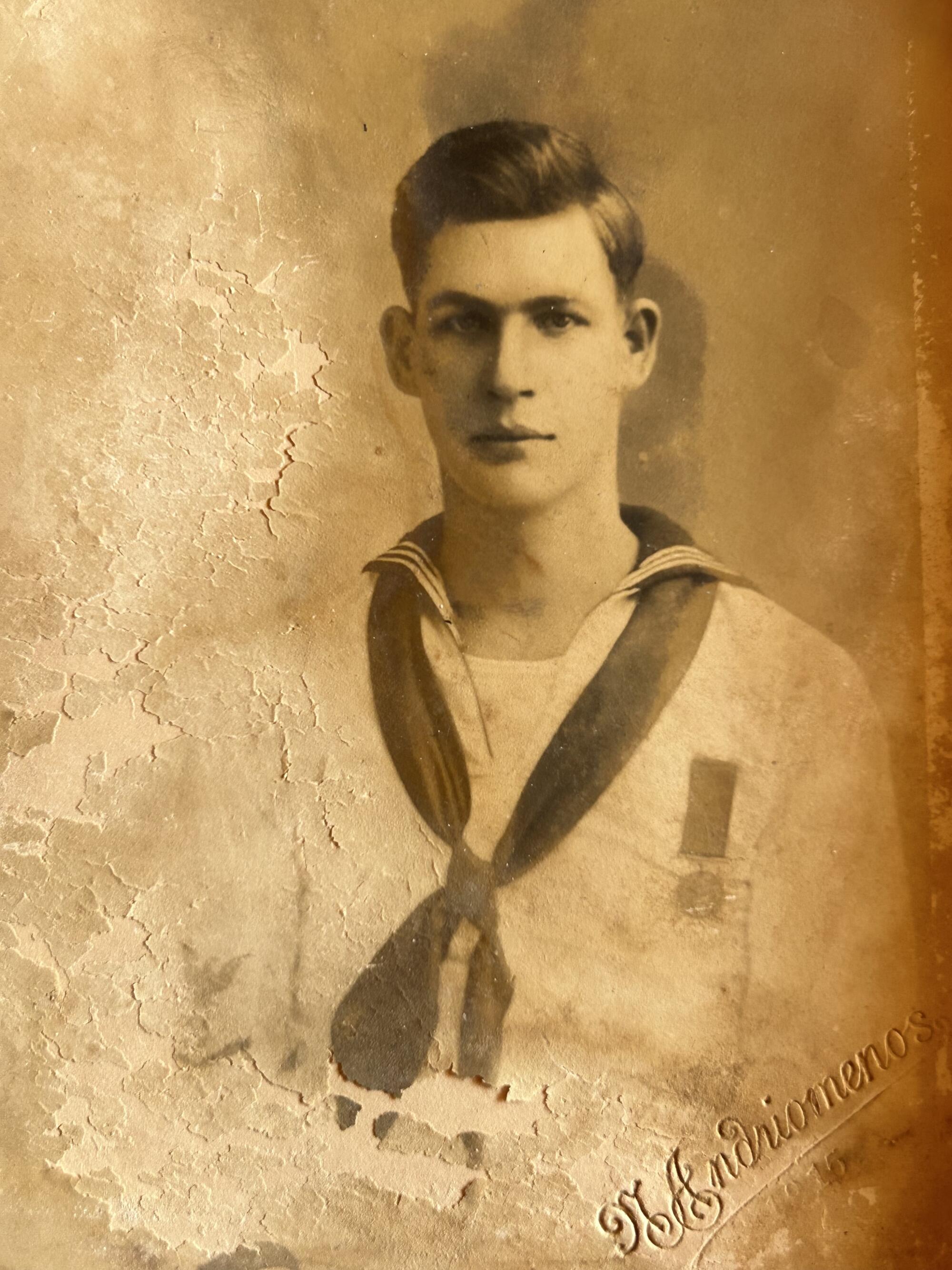
Wallace Fox Sr. joined the U.S. Navy when he was 16.
(Courtesy of the Fox household)
He additionally labored in genres like horror and the “East Aspect Youngsters” sequence, however Fox’s wheelhouse was the low-budget western. Cowboys and Indians.
So how did the Chickasaw director reconcile that? Very subtly, if in any respect, Hearne stated. His work largely adopted prevailing tropes. Not like Carewe, a producer and director, and Finis , a scriptwriter, “Wallace had much less inventive management,” Hearne defined. However she has seen delicate variations in Fox’s strategy. “They’re definitely partaking in all of the sorts of stereotypical representations that we see,” she stated, “however they’re largely the sympathetic type. I think that inside the circumstances of chance or impossibility for him … at the moment, that was possibly a deliberate alternative.”
Largely, although, Fox caught to the script, as a result of that was the gig, even when he transitioned to TV, engaged on tasks like “The Gene Autry Present” and “Ramar of the Jungle.” He was an skilled at leaving no footprint.
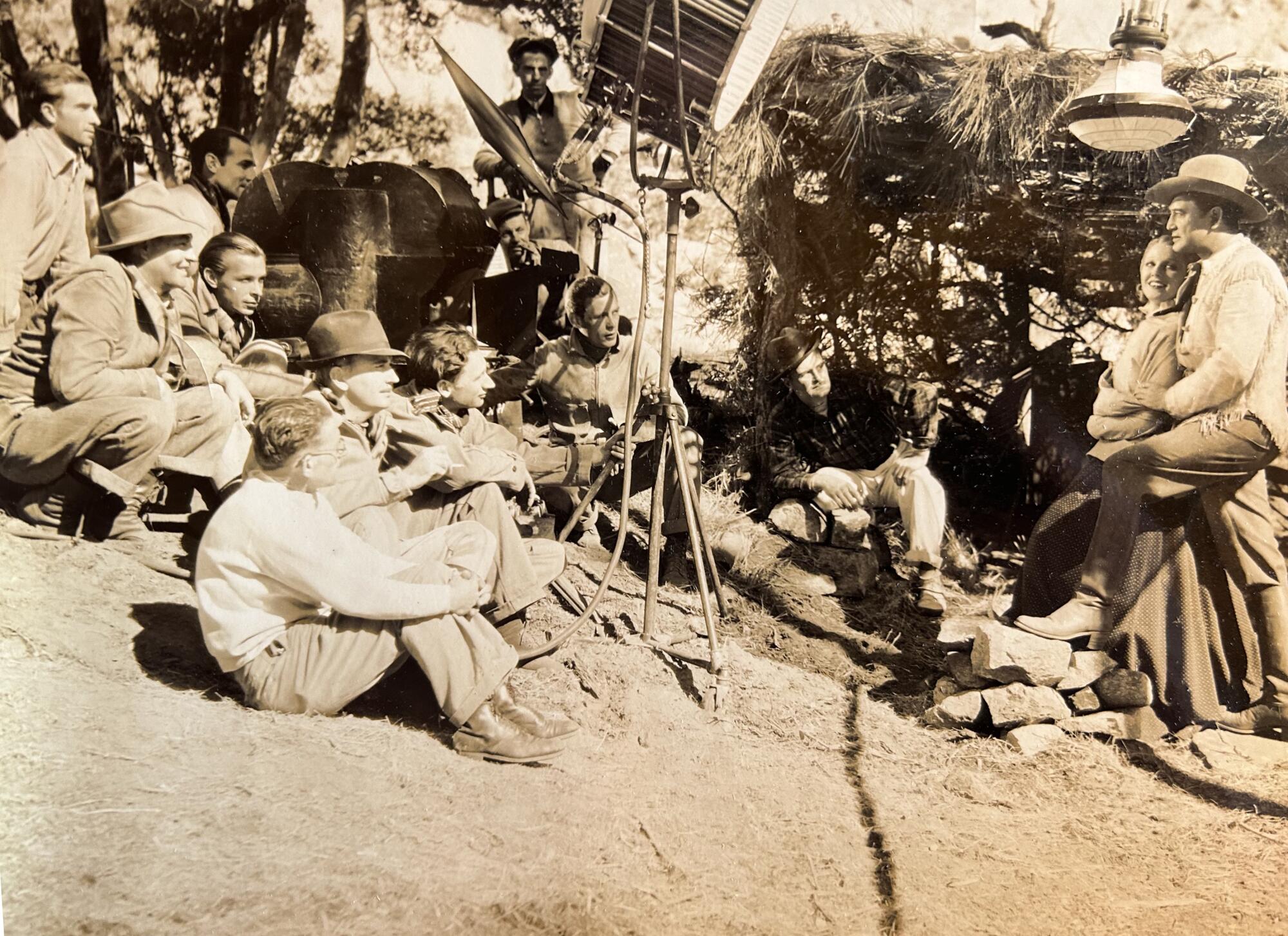
Wallace Fox Sr., far left carrying a hat, on a film set.
(Courtesy of the Fox household)
After the TV jobs dried up, Fox and his spouse, Cleo, moved to Detroit, the place he directed auto trade gross sales and educational movies till he died in 1957.
:::
My excavating additionally led to some much less elegant skeletons. The daddy of Wallace, Finis and Jay Fox was a white man named Frank Fox, who joined the Texas Cavalry when he was 15 and served 4 years within the Civil Conflict, preventing for the Accomplice Military, earlier than marrying Sallie Priddy, an Indigenous lady whose lineage traced to Chickasaw Nation secretary (and Chickasaw Corridor of Fame member) John McLish, a person who had President Andrew Jackson’s ear and was instrumental in settling Chickasaw Nation territory in what’s now Oklahoma.
Not like “Killers of the Flower Moon,” nevertheless, there’s no proof this was a nefarious marriage. “I don’t suppose that this was the type of marriage that was purely for both the takeover of the land or the acquisition of citizenship,” Hearne stated.
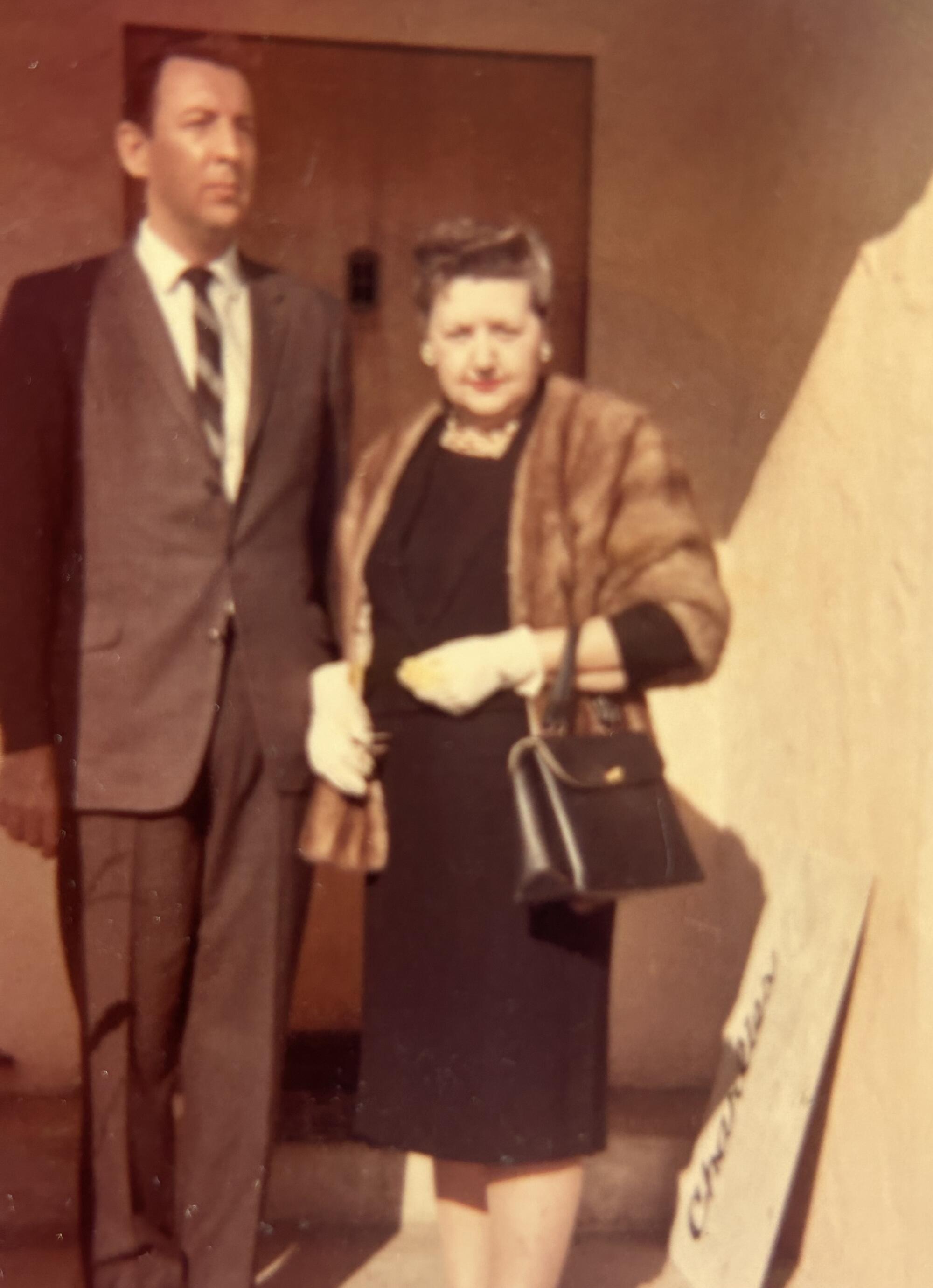
Wally Fox along with his mom, Cleo.
(Courtesy of the Fox household)
After 28 years of marriage, Sallie died in 1899. When Frank Fox remarried, Wallace, at age 6, was shipped off to a army academy in San Antonio. He remained in boarding faculties till he joined the navy at age 16. He was deployed in France throughout World Conflict I and remained within the army till he was 25.
Wally described his father as a stoic, socially awkward man, which he attributes to his rising up with out the love of family members. He stated he by no means felt like he knew a lot about Wallace Fox, apart from his love of the ocean. Communication was sparse.
Eight many years later, my Uncle Wally’s reminiscence was freshest when remembering three symbols of their relationship: a basketball backboard, a BB gun and an oversize practice set. They had been among the many presents from his father, Wally famous, and proof he knew little or no about his personal son.
“He purchased all these things for me,” my uncle stated, “however he by no means mentioned what I would like or may even need, and I feel it was as a result of he didn’t have a childhood of his personal.” On the age of 96, Wally was nonetheless the upset little one, whose dad was a stranger to him.
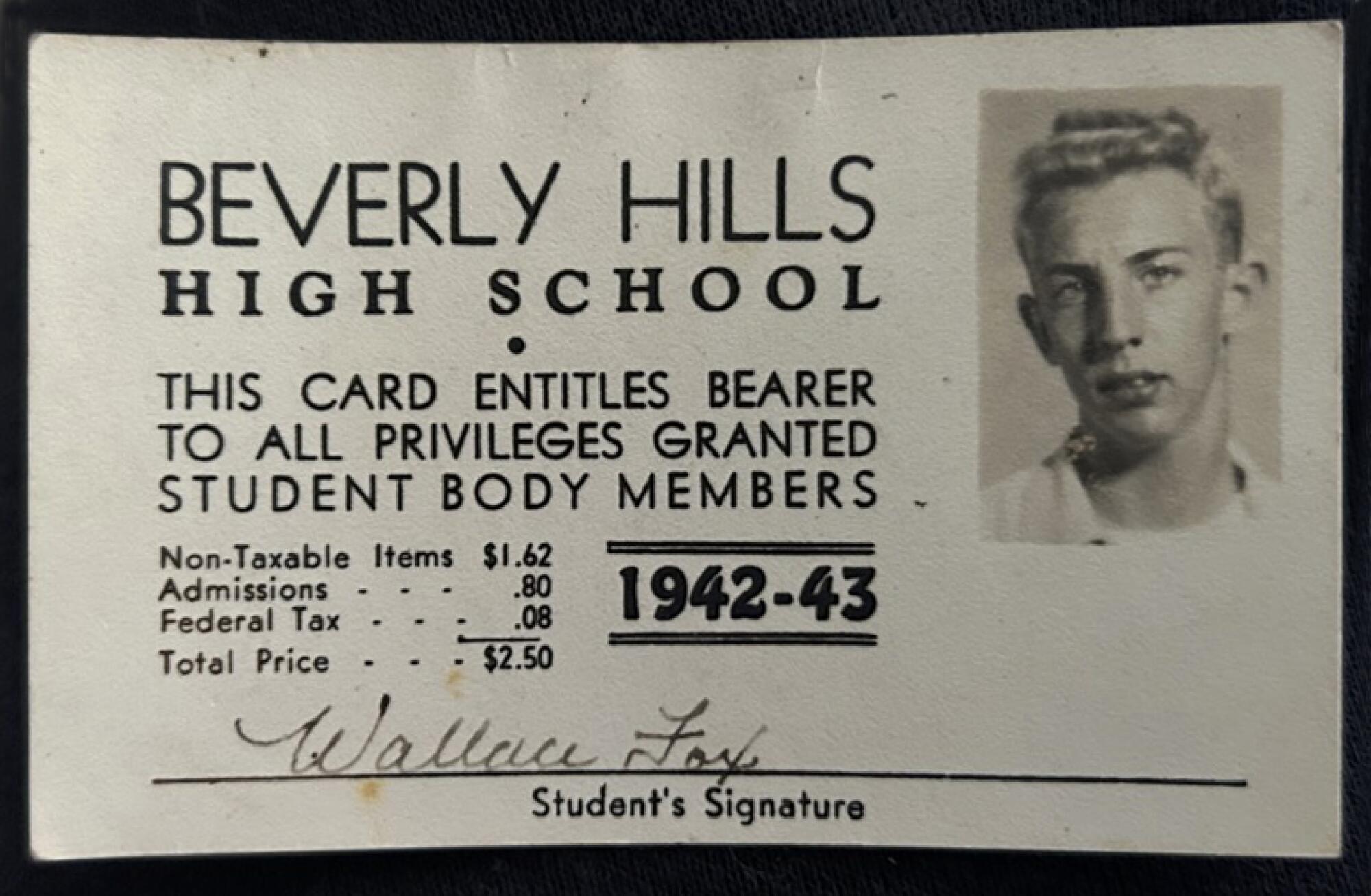
Wally Fox’s ID card from Beverly Hills Excessive Faculty.
(Courtesy of the Fox household)
“This was not an intentional factor. It was simply one thing he was unable to handle from any of his earlier experiences,” Wally stated, making an attempt to elucidate it away. “And having been within the navy for 9 years he was used to a sure order.” His father’s brothers, Finis and Edwin, had been raised by their dad and mom, however Wallace was by no means allowed to simply be a toddler. It could appear, maybe, that the attributes that made him a skillful director of low-budget movies had been what made him ill-equipped as a dad or mum: He was analytical, withheld emotion and was much less targeted on connection than outcomes.
In some ways, I felt that very same lack of paternal compassion, and I’ve very consciously tried to change the course of that poisonous DNA. I used to be in my 30s earlier than I turned a dad or mum, and my spouse and I took a heightened curiosity within the lives of our son and daughter, maybe bordering on the “helicopter” strategy however making an attempt to be accessible to them — to speak, to assist with homework, to drive them right here and there and to be current in any respect dance recitals and baseball video games.
***
After I started to wash out Wally’s home after his demise, I discovered reminiscences of his father scattered all through, a proof of life that may’t be defined on a Wikipedia web page. There have been scripts, telegrams, contracts, prop weapons, film posters, postcards from the Navy to his beloved Cleo, and monogrammed lighters and matchbooks. The sorts of belongings you stuff in a drawer and overlook about.
There have been images stashed in all places, many tucked into the stacks of Yellow Pages cellphone books in Wally’s bed room closet, warped and stained from water injury. Manufacturing stills, household images, the three Fox brothers with their wives and children. Previous-time photos of individuals I don’t acknowledge.
Though I’ve donated lots of the bodily artifacts to the College of Oklahoma for Hearne to check, my curiosity — maybe verging on obsession — in studying about my Chickasaw ancestors continues to develop as I join extra dots. I imagine that the extra I be taught concerning the Fox household, the extra I’ll perceive myself.
After all, I share every new revelation with my household as if I’ve found the Rosetta Stone, they usually care about this quite a bit lower than I do. However, I stay stubbornly undeterred even within the face of their detached politeness.
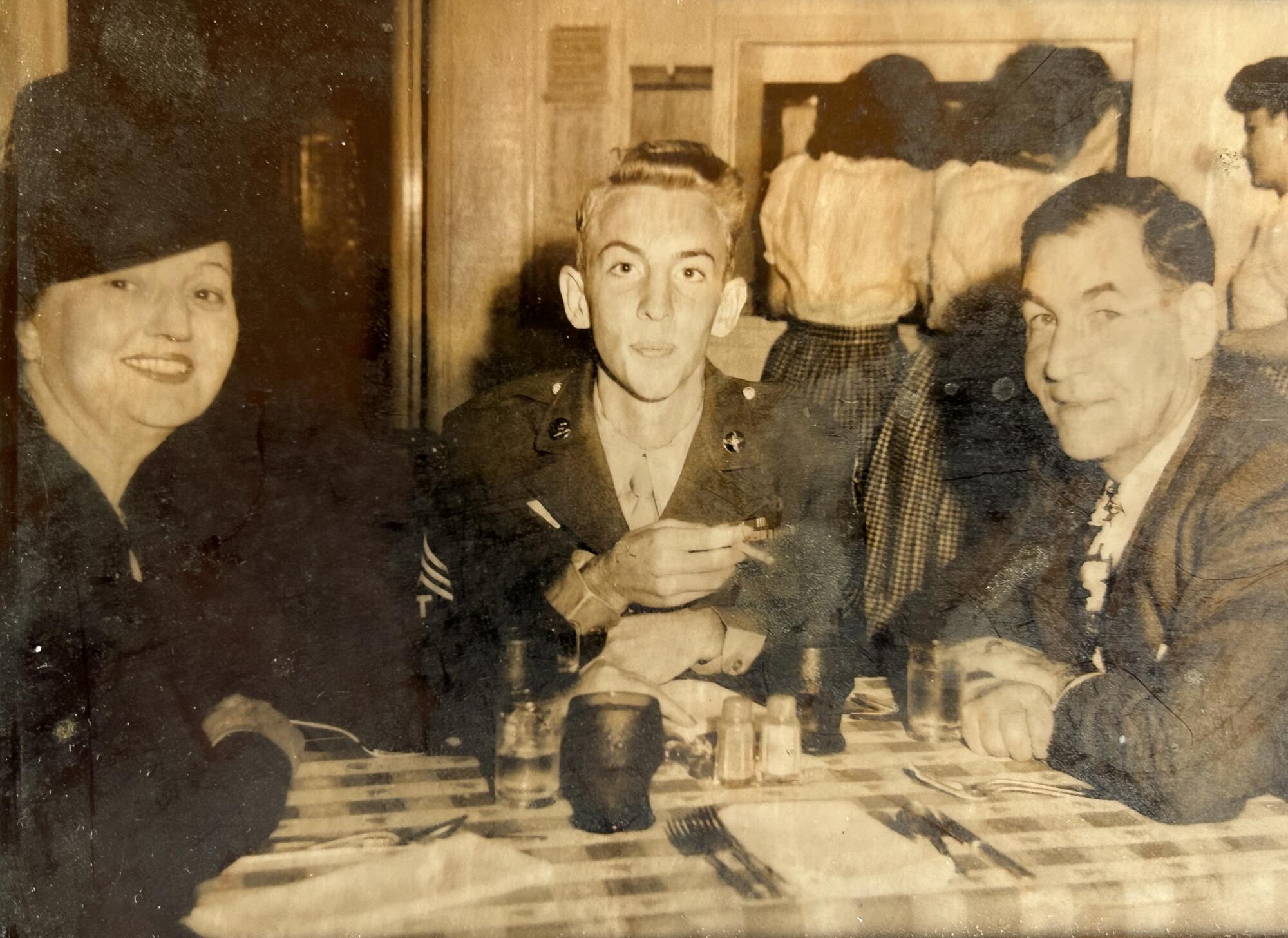
Cleo Fox, left; her son, Wally, middle; and Wallace Fox Sr. in a household picture.
(Courtesy of the Fox household)
However a few of my ardour permeated these invisible boundaries. When my daughter, Liv, crammed out faculty functions for the College of California system, 5 brief essays had been required, giving college students an opportunity to make an impression past cold grades and GPA.
The ultimate little bit of writing — an non-compulsory sixth essay — concerned a deceptively tough query: “What do you need to inform us that we don’t know?” The 5 essays had been a battle, however this query acquired a fast response.
Liv needed to write down about id, what she’d realized concerning the household’s Chickasaw Nation historical past and the way it differed from all the pieces she’d beforehand linked to. She too is beginning to perceive the complexity of id; that we’re a composite of many parts, a few of which we could not even pay attention to till we burrow deep right into a rabbit gap to search out them.
